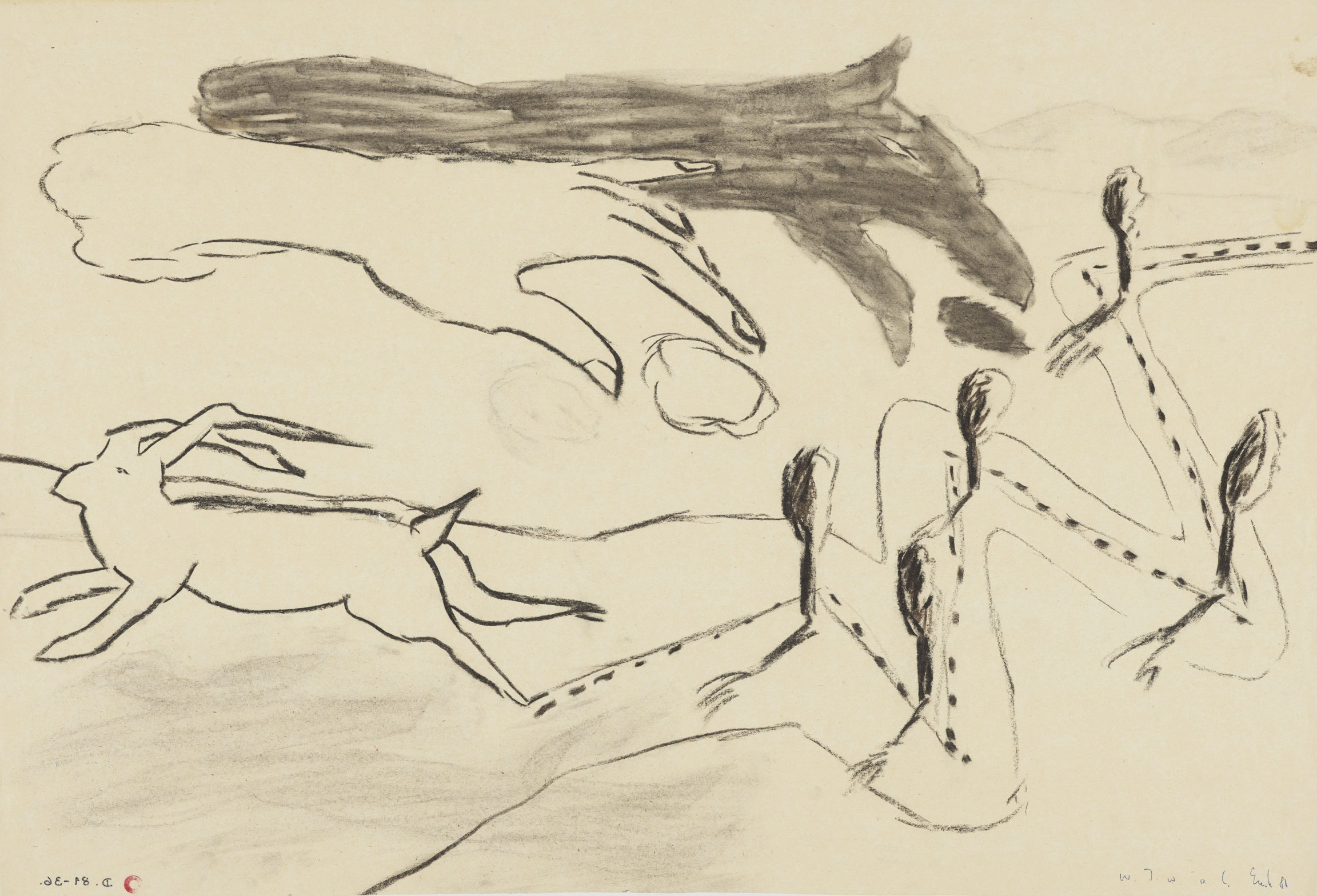Bibliography
Laurence Schmidlin, Naissance et vie des formes. Dessins contemporains de la collection du MCBA, Lausanne, Musée cantonal des Beaux-Arts, 2022 (Espace Focus series, n. 6): 21.
Toni Stooss, Peter Emch. Zeichnungen 1980-1984, exh. cat. Thurgau, Kunstmuseum des Kantons Thurgau, Kartause Ittingen, Solothurn, Kunstmuseum Solothurn, Graphisches Kabinett, Zurich, Edition Stähli, 1985.
Peter Emch, exh. cat. Zurich, Galerie Jörg Stummer, Lausanne, Galerie Rivolta, 1980.




Peter Emch studied graphic design in Biel/Bienne from 1960 to 1965, then worked in advertising in Paris and Zurich for a number of years. He began teaching drawing in 1975 and gained some recognition as an artist at the same time, showing his work in exhibitions, particularly with the support of the Zurich gallery owner Pablo Stähli.
This charcoal work, w.I.w.a.c. (‘when I was a child’), is one of a series of the same name, consisting of several dozen drawings dating from 1980 to 1984. Some are A4 format on newspaper, while others, like this one, are around 50 x 70 cm in size on tissue paper. The Museum holds thirteen works from the series, which brought Emch considerable recognition at a time when many artists used drawing as their principal medium, including Martin Disler, Silvia Bächli, and Miriam Cahn.
The free, dynamic style of the w.I.w.a.c. series is typical of its time, not only in its approach to draughtsmanship, but also in its choice of themes, including sexuality and male-female relationships. At the time, Emch was living in a community outside Zurich where such topics were frequently debated by his circle, including feminists and professional psychoanalysts. The group regularly debated the role of the subconscious in art, shaping Emch’s drawings. Figures and motifs are frequently repeated across several works, challenging his own position as artist and seeking to uncover his deepest, most hidden thoughts.
In this charcoal work, a road winds across a landscape with trees planted along it at regular intervals. A hare leaps away from the road, dominated by a hand facing the other way, its shadow a dangerous predator. As the series title suggests, the juxtaposed elements point to a return to childhood, complicating the narrative and opening up several potential readings.